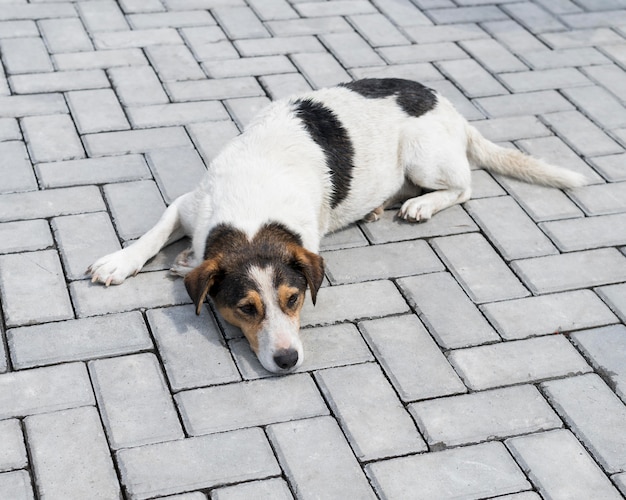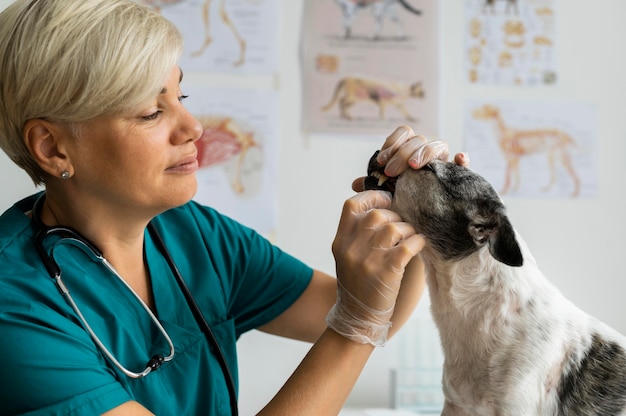Recognizing Lameness and Limping in Pets: Causes and Solutions


Recognizing Lameness and Limping in Pets: Causes and Solutions
When your beloved dog or cat suddenly starts limping or seems reluctant to walk, it can be both alarming and confusing. Lameness and limping are among the most common reasons pet owners seek veterinary care; these symptoms can range from a minor inconvenience to a sign of a more significant health issue. At South Park Animal Hospital, located at 598 2nd Street, San Francisco, CA 94107, our veterinary team understands how distressing it can be to see your pet in pain or unable to move comfortably. Whether you’re searching for solutions to pet lameness symptoms in San Francisco or need a thorough evaluation for your limping dog or cat, our hospital is here to help.
In this comprehensive guide, we’ll walk you through how to spot lameness, what might cause your dog or cat to limp, how our veterinarians diagnose and treat these issues, and what you can do at home to support your pet’s recovery. You’ll also find out when it’s time to schedule an appointment with a trusted vet near me for prompt, compassionate care. If your pet is experiencing sudden or severe limping, we offer same-day urgent care appointments to ensure timely attention and comfort for your furry family member.
Understanding Pet Lameness Symptoms: What to Watch For
Recognizing Lameness in Dogs and Cats
Spotting lameness in pets can sometimes be straightforward, while in other cases, it may be subtle and easy to miss. Key symptoms include favoring one leg or refusing to bear weight on a limb, as well as noticeable limping or an abnormal gait. Other signs to watch for are difficulty rising from a resting position, hesitancy to jump or climb stairs, licking or chewing at a specific leg or paw, and vocalizing when moving or being touched. In some situations, you might observe swelling, heat, or visible wounds on the affected limb. Behavioral changes such as irritability or withdrawal can also be indicators that your pet is dealing with discomfort related to lameness.
Understanding these symptoms is crucial because they help you determine when your pet might need a comprehensive pet exam. Early recognition and intervention for pet lameness symptoms in San Francisco and surrounding communities can make a significant difference in your pet’s prognosis and comfort.
Differentiating Acute vs. Chronic Lameness
It is important to distinguish between acute and chronic lameness. Acute lameness refers to a sudden onset, often caused by injury or trauma. Chronic lameness develops over time and may be linked to underlying orthopedic or systemic conditions. If your pet’s limping appears suddenly, especially after activity or injury, prompt attention may be necessary. Persistent, intermittent, or progressively worsening limping should also be evaluated by a veterinarian to avoid long-term complications.
Limping Dog Cat Causes: Why Pets Develop Lameness
Common Causes of Lameness in Pets
The reasons behind lameness are varied and depend on your pet’s age, activity level, and overall health. For dogs and cats in San Francisco, causes of limping can include soft tissue injuries such as sprains or strains, wounds or lacerations, and foreign objects like thorns lodged in the paw. Other potential causes are broken bones, dislocated joints, ligament injuries such as cruciate ligament tears, and patellar luxation, which is when the kneecap slips out of place. Chronic conditions like arthritis, hip dysplasia, and other degenerative joint diseases can also lead to ongoing lameness.
In younger, active dogs, injuries from play, running, or jumping are common culprits. In older pets, arthritis and other age-related joint changes are frequent sources of discomfort. Cats may hide their pain, so even mild limping can signal a significant problem. Environmental factors unique to San Francisco, such as slippery sidewalks during rainy weather or rough terrain in local parks, can also contribute to injuries.
When Lameness Signals a Medical Emergency
While some cases of limping are minor and resolve with rest, others may indicate a more serious issue. Severe pain, inability to get up or move, bleeding, swelling, or limbs at an abnormal angle are all reasons to seek immediate veterinary attention. In San Francisco, where urban hazards may increase injury risks, prompt evaluation ensures your pet receives the right care quickly. Our veterinary professionals are equipped to address urgent mobility concerns with same-day urgent care for pets in distress.
Diagnosing and Treating Pet Lameness: What to Expect at Your Veterinary Visit
The Diagnostic Process
When you bring your limping dog or cat to South Park Animal Hospital, our veterinarians begin with a comprehensive history and physical examination. This assessment includes observing your pet’s gait, feeling for swelling, heat, or tenderness, and checking joint movement. Depending on the findings, further diagnostics may be recommended; these might involve digital radiology, orthopedic evaluation, or laboratory testing to rule out systemic illnesses.
For many mobility issues, specialized orthopedic diagnostics are essential. Our orthopedic services for pets experiencing mobility issues in San Francisco provide advanced imaging and surgical options when needed. Whether your pet requires a simple splint or a more involved procedure, such as ligament repair or patellar luxation surgery, we tailor care to your pet’s unique needs.
Treatment Options for Limping Dogs and Cats
Treatment approaches involve addressing the underlying cause and managing pain to restore your pet’s mobility. Minor injuries may benefit from rest, anti-inflammatory medications, and supportive care. For wounds or lacerations, our veterinary team can provide thorough cleaning, suturing, and wound management. More complex orthopedic conditions, such as cruciate ligament tears or chronic hip issues, may require procedures like ACL repair surgery or FHO surgery for pets with hip injuries. When patellar luxation is to blame, knee cap dislocation surgery can restore comfort and function.
Pain management is always a priority, and our veterinarians use a combination of medications, nutritional support, and, when appropriate, physical rehabilitation strategies to help pets heal comfortably. In rare cases where a limb cannot be saved due to severe trauma or chronic pain, amputation surgery may be considered as a last resort, always with your pet’s quality of life as our central concern.
Prevention and Home Care: Supporting Your Pet’s Mobility
At-Home Steps for Pet Owners
After a veterinary evaluation, home care plays a vital role in your pet’s recovery. Steps include providing a quiet, comfortable resting area for your pet, restricting high-impact activities, and following all medication and wound care instructions given by your veterinarian. Maintaining a healthy weight reduces stress on joints, so nutrition counseling can be a valuable part of long-term prevention. For pets with chronic joint conditions, supplements or prescribed diets may support joint health.
Environmental modifications, such as adding non-slip mats or ramps, can help pets safely navigate your home. Regular wellness examinations help catch subtle changes in mobility before they become severe, allowing for early intervention. If your pet is prone to injuries or has a known orthopedic condition, periodic check-ins with a veterinarian near me can ensure ongoing comfort and function.
Preventing Lameness in San Francisco’s Urban Environment
San Francisco’s unique urban landscape means pets face specific challenges, from navigating busy sidewalks to exploring local parks. Being mindful during walks, using appropriate harnesses or leashes, and promptly addressing any limping or injuries can help prevent more serious problems. Seasonal factors, such as wet weather, may increase the risk of slips and falls; keeping your pet’s nails trimmed and fur between the pads short can improve traction.
When to Seek Veterinary Services Near Me for Limping or Lameness
Knowing when to call your veterinarian is essential for your pet’s safety and well-being. You should schedule an appointment if your pet: limps for more than a day, has swelling or heat in a limb, appears to be in pain, refuses to use a leg, or shows signs of infection such as redness, discharge, or fever. Sudden, severe lameness, inability to stand, or visible deformities warrant immediate veterinary attention.
Our experienced veterinary professionals at South Park Animal Hospital encourage you to trust your instincts. If you are ever unsure, reaching out for guidance is always the safest choice. We offer pet examinations to identify causes of limping and lameness in pets, with the goal of restoring comfort and mobility as quickly as possible. Timely evaluation and intervention can prevent minor issues from turning into lifelong problems.
Conclusion: Restoring Your Pet’s Mobility with Compassionate Veterinary Care
Lameness and limping can impact your pet’s happiness and quality of life, but with attentive care from a trusted veterinary team, most pets can return to their playful, active selves. At South Park Animal Hospital, we are proud to serve San Francisco and surrounding communities with comprehensive pet health services, including advanced orthopedic care and urgent attention for sudden injuries. If your dog or cat is showing signs of lameness, do not wait for symptoms to worsen. Schedule an appointment with our veterinarians for a thorough evaluation and personalized treatment plan.
For expert help from a vet near me or to learn more about solutions for pet lameness symptoms in San Francisco, contact South Park Animal Hospital today at (415) 523-4404 or visit our hospital at 598 2nd Street, San Francisco, CA 94107. Our veterinary professionals are committed to providing the highest quality veterinary services near me, supporting the lifelong mobility and happiness of your furry family members. If you have questions or concerns about your pet’s limp, our team is ready to help you find answers and peace of mind.
This article is intended for informational purposes only. It should not replace professional veterinary advice, diagnosis, or treatment. If your pet is injured or unwell, please consult your veterinarian promptly.



















